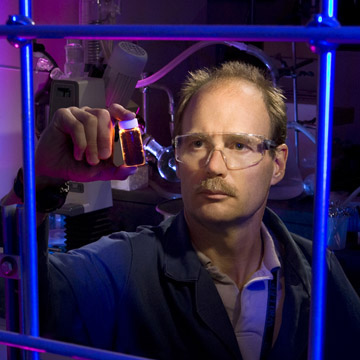Nanoporous Al2O3 as a “Getter” for Volatile Radionuclides into Nanostructured Glass-Ceramic Waste Forms

The first phase of this project is capture and encapsulation which is achieved by using nanoporous alumina to confine gaseous iodine, for example, from fission or waste processing. The captured iodine is then reacted with silver or copper to form precipitates inside the nanopores of the material (the fixation). The material is then mixed with glass-forming constituents which are then heated to seal and encapsulate the waste forms.
These radionuclides are entrapped in a glass/crystalline matrix which does not require the use of silver to immobilize iodine. This process not only keeps operation costs lower, it reduces the potential hazards to the environment. By encapsulating volatile radionuclides such as iodone, the structure provides an increased resistance to breakdown and controlling the harmful effects of similar radionuclides.
- Encapsulation of volatile radionuclides for safer disposal and cleanup
- Protection of soil and water supplies
- Reduced cost and hazards due to elimination of silver immobilizing iodine
- Reduce risk of materials with long half-lives
- High resistance to chemical and mechanical degradationnce to chemical and mechanical degradation
- Environmental cleanup of volatile materials
- Nuclear fuel reprocessing
- Government/commercial nuclear facilities
- Chemical separation/concentration
- Water treatment
- Other chemical industries
- Radioactive/non-radioactive waste management
SD#11220
Published9/29/2011
Last Updated10/31/2016